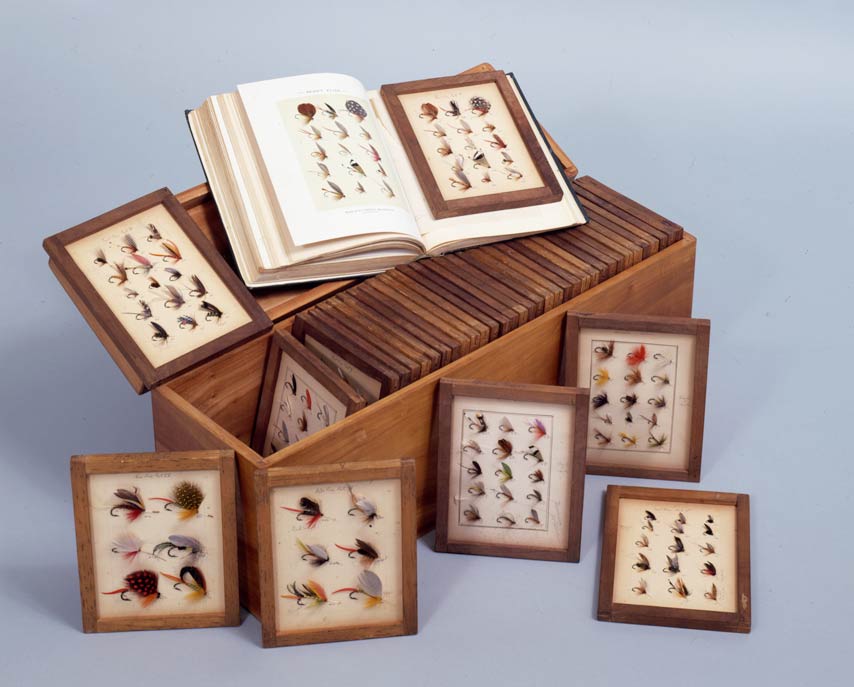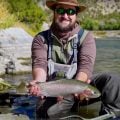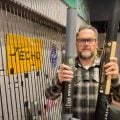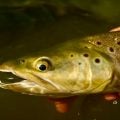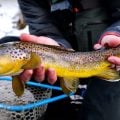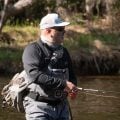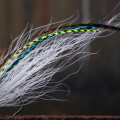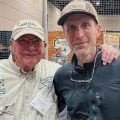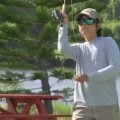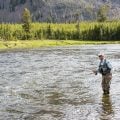American Museum of Fly Fishing’s Top 50 Objects, Part 3: #25–#16

For more than 50 years, the American Museum of Fly Fishing has been preserving the history of fly fishing across two physical locations—in Manchester, Vermont, and Springfield, Missouri—and through their award-winning quarterly journal, The American Fly Fisher. This year, AMFF and MidCurrent have teamed up to count down the 50 most interesting objects in the museum’s permanent collection, which currently includes more than 25,000 objects in total. Each month will feature a variety of historically significant items, with brief descriptions from AMFF curator Jim Schottenham.
This month, we cross the halfway mark of our countdown, with objects #25—#16. If you missed the first two installments, be sure to check them out (Part 1: #50—#36 and Part 2: #35—#26).
To view additional information on each object, click on the link below the object image to access AMFF’s online collections database.
#25
Fly plates for Mary Orvis Marbury’s Favorite Flies and Fishing with the Fly, c. 1880s
Gift of Orvis (1973.067.002)
Housed in a wooden box, the original flies used for the Milton Bradley (lithographers) color plates in Mary Orvis Marbury’s 1892 book Favorite Flies and Their Histories are sewn onto framed cards, which served as models for the illustrations featured in the book. Discovered by Herman Kessler during a visit to the Orvis shop in the 1960s, these vibrant, historic flies—tied by Mary and her team of women tiers—played a significant role in inspiring Kessler to create a museum of fly fishing.
#24

Fly box with flies formerly owned by President Grover Cleveland, c. 1890s
Gift of Mrs. Joseph Browne (1986.011.001)
Elected as the 22nd and 24th President of the US, Cleveland was famously known for being an avid angler and outdoorsman, often escaping the pressures of his office by picking up a rod and heading to any available water. This Malloch fly box, containing more than two dozen salmon flies used by the former President, came directly from his son, Mr. Richard Folsom Cleveland, who gifted them to our donor.
#23
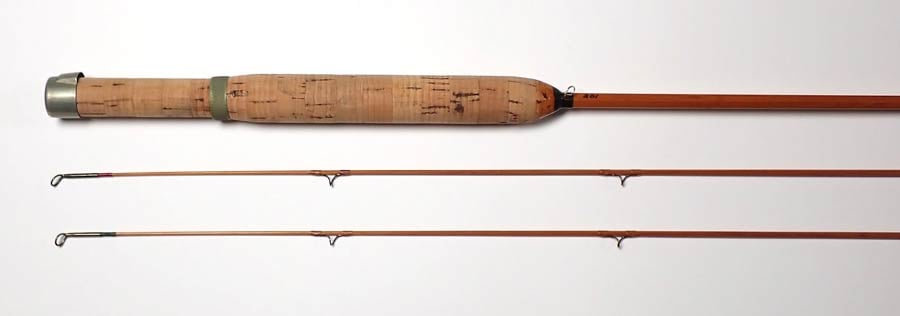
Garrison model 201 bamboo fly rod, c. 1940s
Gift of Hoagy B. Carmichael (1994.020.002)
Everett Garrison’s rod-repair skills matched his talent for building some of the finest split-bamboo fly rods ever made. This model 201—a two-piece, seven-foot trout rod—accompanied Garrison while he fished with his friend, Charles De Feo, at salmon camp. A newly hired maid, attempting to clean the angler’s room, used this “pole” to beat the dust and dirt from a rug in Garrison’s room, which caused extensive damage, and earned the rod a title of “The Rug Beater.” Once repaired by Garrison, the rod was employed by numerous anglers while waiting for their new Garrison rod to arrive, a true testament to the quality of the rod and the repair.
#22
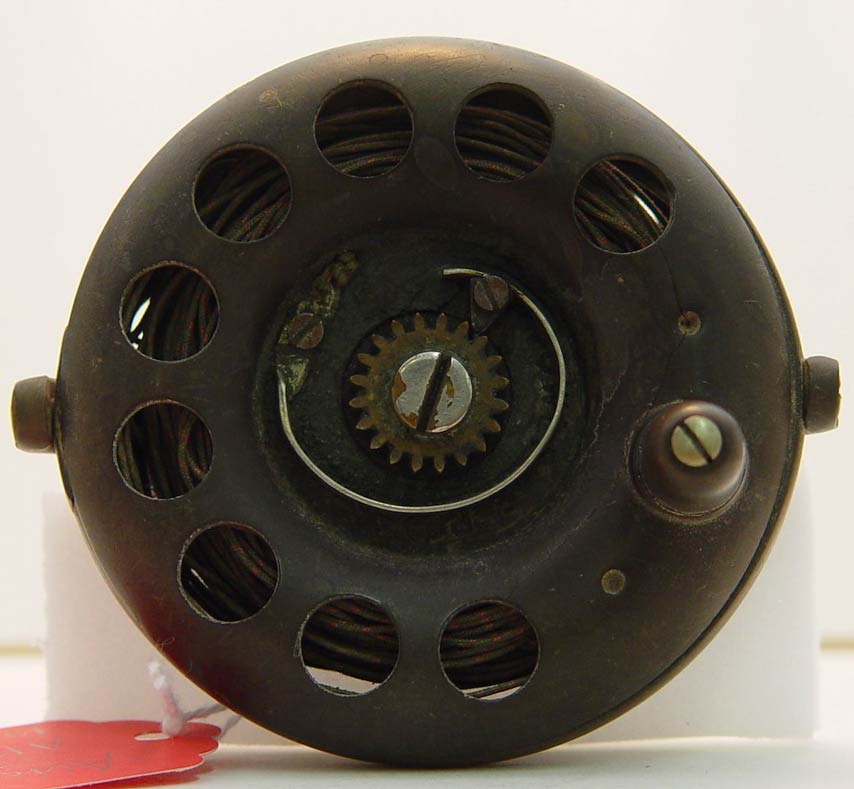
Alonzo H. Fowler side-mount fly reel, c. 1875
Gift of Laurence A. Quick (1977.031.001)
Alonzo H. Fowler was a dentist who used the molding technology from his profession to create a reel made entirely of hard rubber. His initial offering in 1872 lacked a click gear and pawl, improvements that appeared on the reels in 1875 advertisements. The Fowler Gem was very lightweight, but very fragile; any mishandling of the reel could result in damage. There are few known intact examples in the hands of collectors.
#21

Frederic M. Halford’s Notated Entomologist’s Monthly Magazine, 1888
AMFF permanent collection (2016.043.001)
On October 25th, 1888, Frederic M. Halford signed, dated, and personally annotated copies of two pivotal papers on Ephemeridae (“mayflies,” in the American usage). He had them specially bound into two slender volumes, each measuring 9″ x 6″. In Modern Development of the Dry Fly (pp. 174–175), Halford recalled how he and his close collaborator, George Selwyn Marryat, were “most anxious that the scientific naming [of chalkstream insects] should be beyond question.” That anxiety was resolved during Halford’s meeting on the same date—October 25th, 1888—with the Rev. Alfred E. Eaton, described by Halford as “one of the most eminent living entomologists” and the author of the two scientific papers he had so eagerly annotated. With Eaton’s expert guidance, Halford was able to correlate the often inconsistent common names used by fly fishers with precise scientific classifications. This meeting marked a turning point. By establishing clear, authoritative names for the natural flies imitated in dry-fly fishing, Halford brought order to what had been a confusing system. Biographer Tony Hayter later described this achievement as the foundation of “a system of nomenclature and recognition” that helped propel “the Dry-Fly Revolution” to an international audience. *
(*Based on the auction description written by Robert Boyle in 2005)
#20
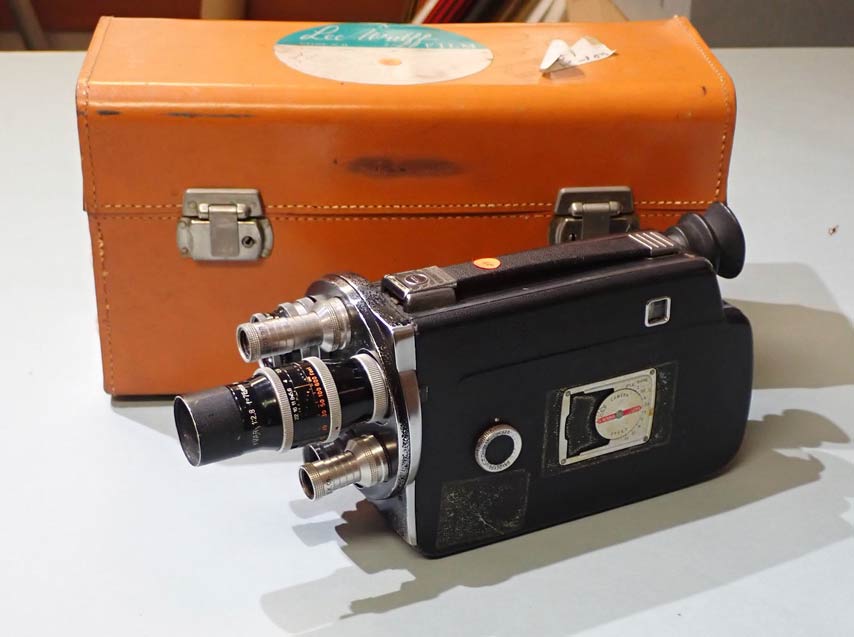
CINE-KODAK-100 CAMERA used by Lee Wulff, c. 1960
Gift of Joan Wulff (2014.084.001)
Lee Wulff was best known as a fly fisherman and conservationist, but he also played an important role in filmmaking. Throughout his angling career, he made and appeared in short films that showed how fly fishing works and highlighted the beauty of wild, natural places. His films were both educational and beautiful to watch, combining lessons about fishing with scenes of nature. These movies helped more people learn about and enjoy fly fishing, while also sharing his message about treating fish and the environment with care and respect.
#19

F. Payne Fly Rod formerly owned by Babe Ruth, c. 1900-10
Gift of Raymond H. and Virginia H. Salminen (1994.028.001)
In addition to having the most recognizable name in all of baseball, George Herman Ruth was also known as an angler in both salt and fresh water. Fly fishing was one of the Bambino’s favorite pastimes, and he enjoyed top-of-the-line equipment like this 8′ 4” E. F. Payne rod, complete with bamboo tip tube.
#18
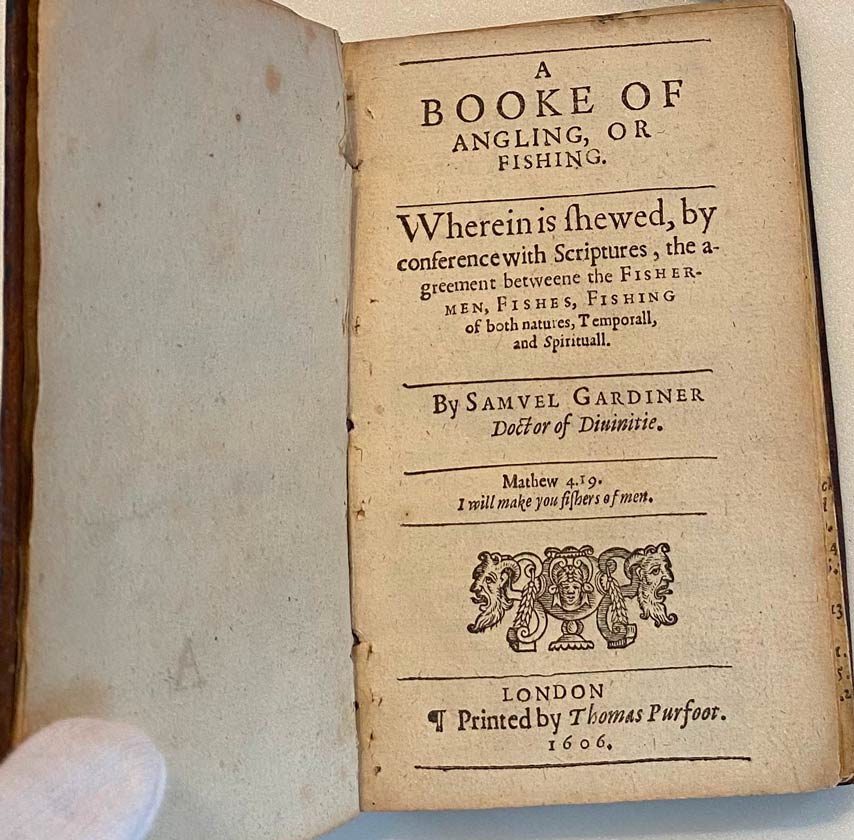
A Booke of Angling, or Fishing, by Samuel Gardiner, 1606
Charles Thacher Collection (2021.035.144)
In 2021, AMFF was the fortunate recipient of a carefully curated angling book collection from Charles Thacher. Among the most notable from the nearly 400 titles in the collection is a copy of Samuel Gardiner’s A Booke of Angling, published in 1606. It is believed to be the only copy of this book, which conflates angling with religious devotion, that existed in a private collection. Housed in a red Morocco box, it features a continuous calf binding and is in remarkable condition for a book of this age.
#17
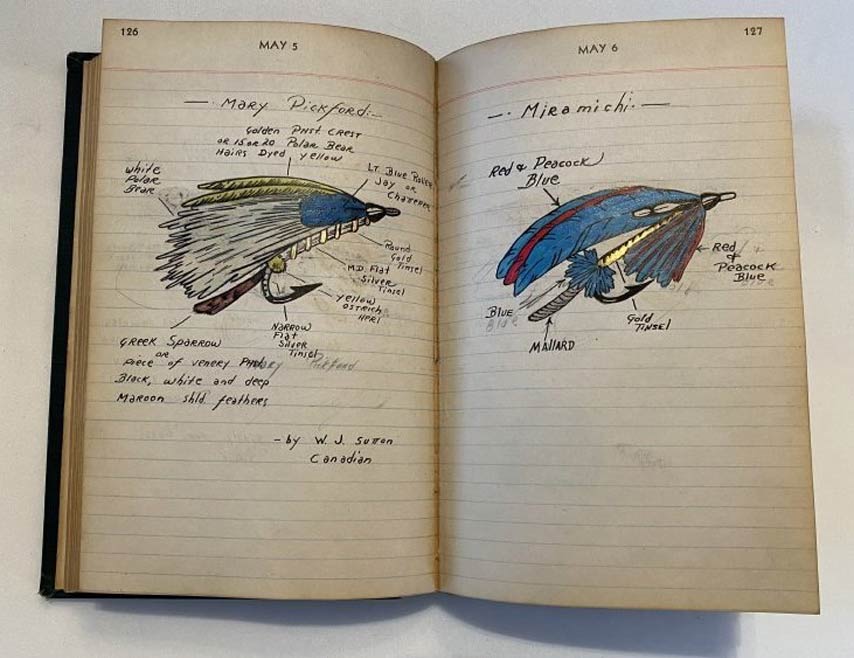
A set of artist’s sketchbooks created by a fly-fishing enthusiast
Charles Thacher Collection (2021.035.348-353)
Another standout in the curated collection of angling books donated by Charles Thacher in 2021, this set of six artist’s sketchbooks contains approximately 2,000 hand-drawn and colored flies, completed over the course of 30 years by Casimir Naleway. Mr. Thacher himself shares the story behind this work in the following video.
#16
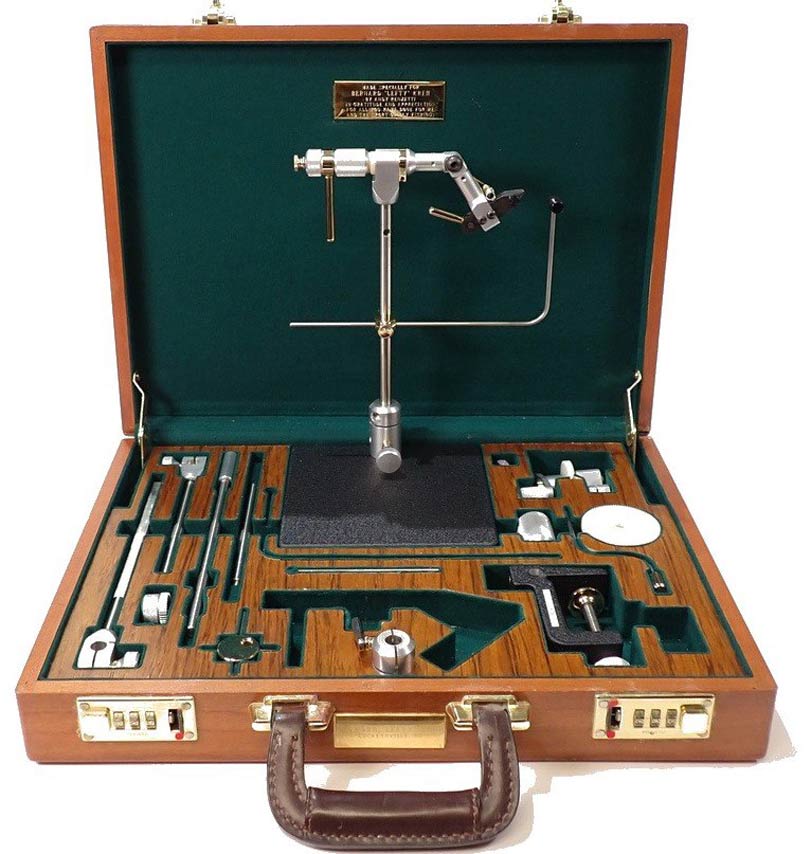
Renzetti Master Special Presentation vise with case, formerly owned by Lefty Kreh, 1992
Gift of Lefty Kreh (2011.006.293)
One of only three of its kind ever built by Andy Renzetti, this serial number 001 vise has components plated in 14 karat gold, custom fit in a wooden carry case. It was given to Lefty Kreh by Andy Renzetti, with the other prototypes given to Bob Popovics and Matty Vinciguerra. In 1994, the Master Series Vise was introduced to the buying public. Despite having access to the finest fly-tying tools in the world, Lefty Kreh, from time to time, still tied flies on a pair of Vise-Grips found in and around his tying desk.
…
